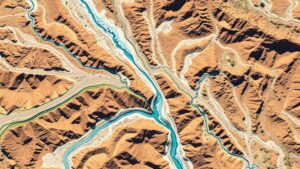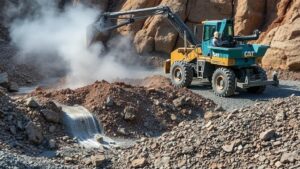Applying Deep Learning to Interpret Geophysical Data for Gold Exploration
Applying Deep Learning to Interpret Geophysical Data for Gold Exploration
The quest for gold has driven exploration geologists to constantly seek innovative techniques to locate economically viable deposits. As geophysical methods of data collection have evolved, so too has the application of advanced machine learning algorithms, particularly deep learning, to enhance data interpretation. This article explores how deep learning techniques can be effectively applied to geophysical data for gold exploration, highlighting key methodologies, technologies, and case studies.
Understanding Geophysical Data in Gold Exploration
Geophysical data comprises measurements related to the Earths physical properties, which can indicate the presence of mineral resources beneath the surface. In gold exploration, geophysical methods such as magnetic, seismic, and resistivity surveys provide valuable insights into subsurface structures.
- Magnetic Surveys: Measures variations in the Earths magnetic field caused by the presence of magnetic minerals.
- Seismic Surveys: Uses seismic waves to map subsurface geological formations, helping to identify potential gold mineralization zones.
- Resistivity Surveys: Evaluates soil and rocks electrical resistivity, which can contrast with areas containing gold deposits.
Geophysical surveys generate large datasets requiring sophisticated analytical approaches, where deep learning comes into play.
Deep Learning Methodologies for Data Interpretation
Deep learning, a subset of machine learning, leverages artificial neural networks with multiple layers to process complex datasets effectively. The following methodologies are particularly relevant in interpreting geophysical data for gold exploration:
- Convolutional Neural Networks (CNNs): Ideal for pattern recognition, CNNs can analyze spatial relationships within geophysical images to identify anomalies indicative of gold deposits.
- Recurrent Neural Networks (RNNs): Useful for sequential data, RNNs can track temporal changes in geophysical measurements, aiding in monitoring mineralization over time.
- Autoencoders: These unsupervised learning models can compress high-dimensional geophysical data, revealing hidden patterns without the need for labeled datasets.
These methodologies enable mining companies to automate the analysis of geophysical data, significantly improving efficiency and accuracy.
Case Studies: Successful Applications
Several companies have successfully implemented deep learning techniques within their gold exploration efforts. One notable example is the collaboration between GoldSpot Discoveries and global mining firms, where advanced machine learning algorithms were employed to analyze geophysical datasets.
In one specific case, the integration of CNNs allowed for enhanced imaging of magnetic data, leading to the discovery of previously unidentified geological structures associated with gold deposits. r approach resulted in a 30% increase in successful drill targets.
Another case involved the use of RNNs to analyze temporal resistivity data collected over multiple seasons. This predictive modeling helped geologists forecast potential resource hotspots, demonstrating a direct correlation between their forecasts and actual mineral deposits.
Challenges and Considerations
Despite the advantages, applying deep learning to geophysical data analysis is not without challenges. For example:
- Data Quality: The effectiveness of deep learning models relies heavily on the quality and resolution of the input data.
- Interpretation Expertise: While models can automate processes, the interpretation of results still requires skilled geologists to validate findings.
- Computational Resources: Training deep learning models can be resource-intensive, necessitating robust computational infrastructure.
Addressing these challenges requires interdisciplinary collaboration between geologists and data scientists to ensure that models are appropriately trained and that results are effectively interpreted.
Actionable Takeaways
Incorporating deep learning into geophysical data interpretation for gold exploration can significantly enhance the efficiency and accuracy of resource identification. Here are some actionable steps for organizations looking to adopt these technologies:
- Invest in high-quality geophysical data collection technologies to improve input datasets.
- Form partnerships with machine learning experts to tailor deep learning models to specific exploration challenges.
- Continually update and retrain models with new data to improve predictive capabilities.
As the industry faces increasing competition and higher exploration costs, leveraging deep learning techniques offers a competitive edge in identifying gold deposits effectively and efficiently.



